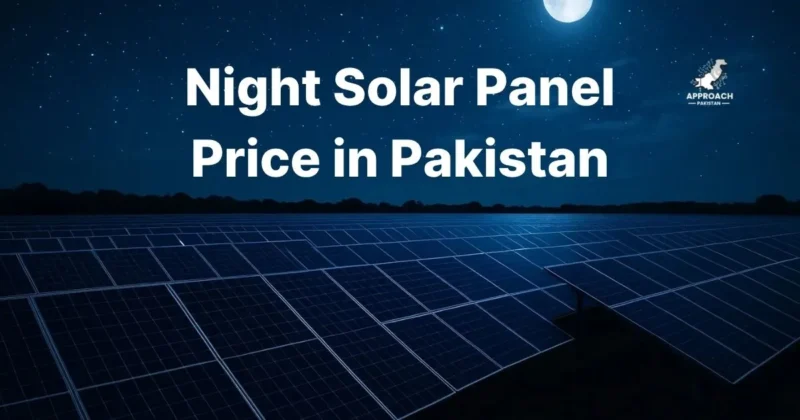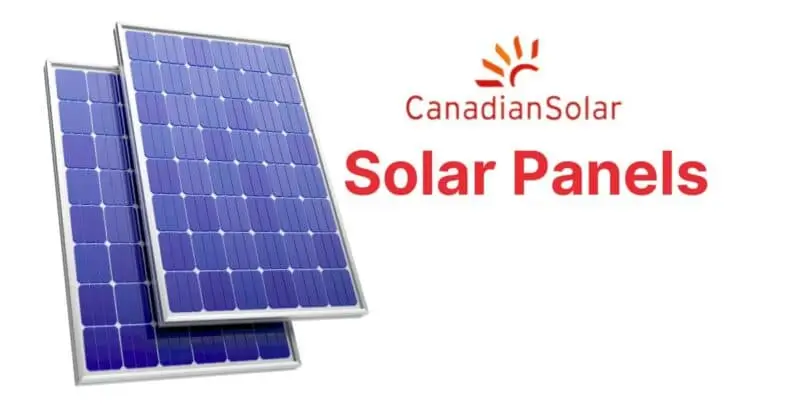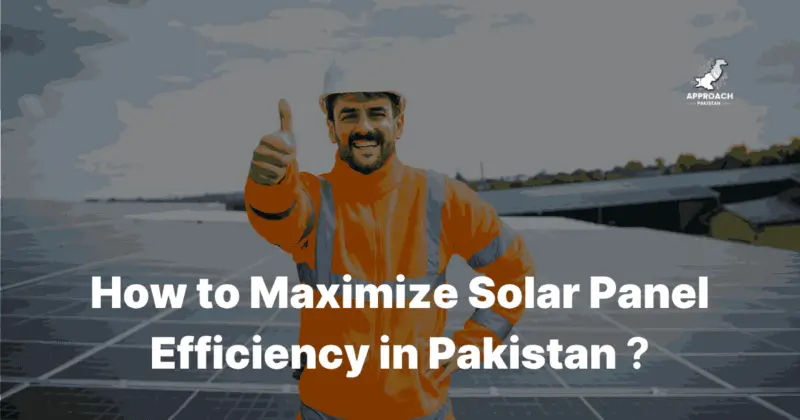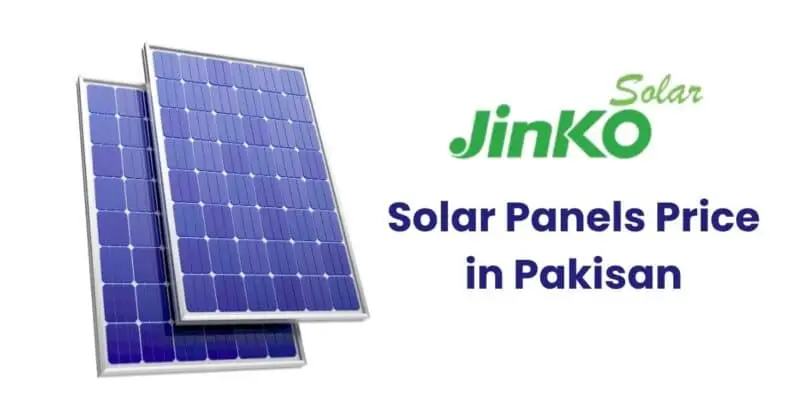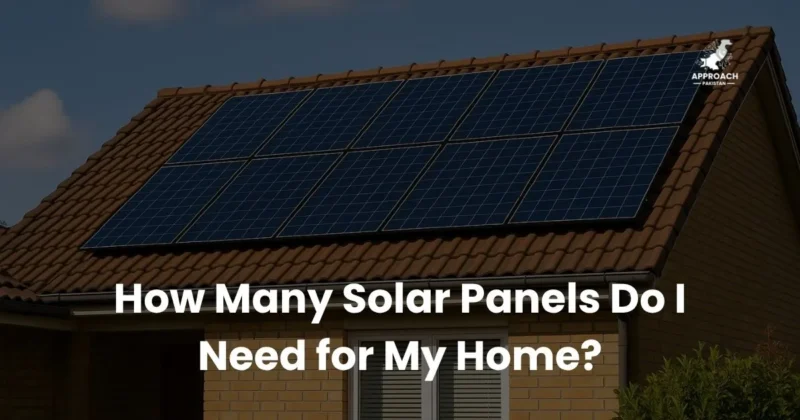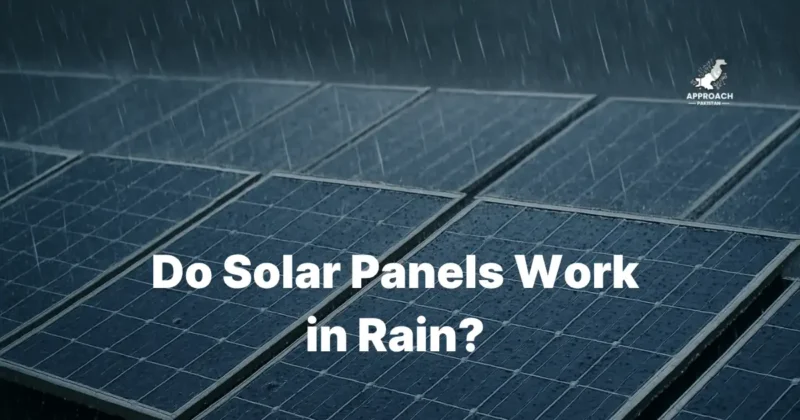Latest 12 Volt Solar Panel Price in Pakistan 2025
The current 12 volt solar panel price in Pakistan ranges from PKR 2,500 to PKR 45,000 depending on wattage capacity, which varies from 10W to 200W. Entry-level 50W 12V panels cost PKR 6,500-8,000, mid-range 100W panels cost PKR 12,000-15,000, while premium 200W 12V panels range from PKR 25,000-30,000. These panels are ideal for small off-grid applications, RVs, boats, and backup power systems for essential devices.
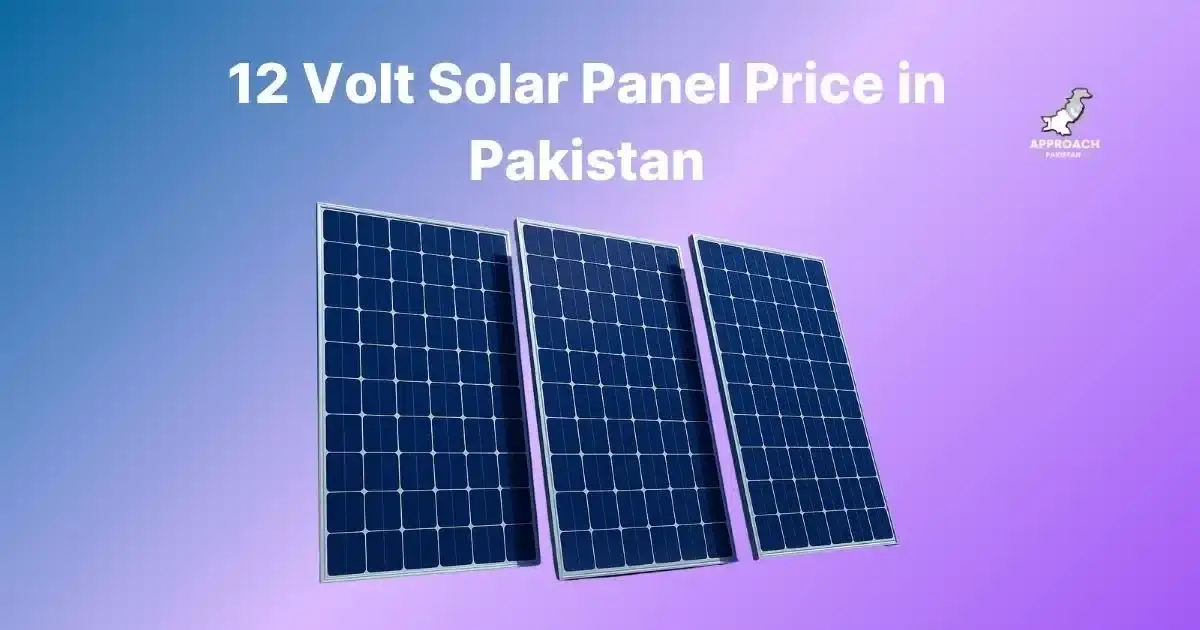
With ongoing load shedding and rising electricity costs affecting Pakistani households, 12V solar panels have become increasingly popular for powering specific appliances, charging batteries, and creating portable power solutions. Unlike standard grid-tie panels, these 12V systems offer versatility for both fixed and mobile applications across Pakistan’s diverse regions.
12 Volt Solar Panel Rates in Pakistan August 2025
The market offers various 12V solar panel options across different wattages and brands. Here’s a comprehensive breakdown of the latest pricing:
12V Solar Panel Prices by Wattage
| Wattage | Price Range (PKR) | Typical Applications |
| 10W | 2,500-3,200 | Small LED lights, phone charging |
| 20W | 3,800-4,800 | Multiple device charging, small fans |
| 30W | 4,900-6,300 | Camping equipment, small DC appliances |
| 50W | 6,500-8,000 | Small TV, laptop, multiple devices |
| 80W | 9,800-12,500 | Small refrigerators, multiple appliances |
| 100W | 12,000-15,000 | RV applications, medium power needs |
| 150W | 18,000-22,000 | Off-grid cabins, multiple DC appliances |
| 200W | 25,000-30,000 | Higher power applications, backup systems |
Popular 12V Solar Panel Brands and Prices
| Brand | Model (100W Example) | Panel Type | Price (PKR) | Warranty |
| Longi Solar | LP12-100W | Monocrystalline | 14,500 | 10yr product/25yr performance |
| Eco Worthy | EW-100W12V | Monocrystalline | 13,800 | 5yr product/20yr performance |
| Renogy | RNG-100D-SS | Monocrystalline | 15,000 | 10yr product/25yr performance |
| Rich Solar | RS-100M-12 | Monocrystalline | 14,200 | 5yr product/25yr performance |
| HQST | HQ-100DB | Monocrystalline | 13,500 | 5yr product/25yr performance |
| Newpowa | NW-100M12 | Monocrystalline | 12,800 | 2yr product/20yr performance |
| Dokio | DK-100M | Flexible Mono | 14,800 | 1yr product/25yr performance |
| Suaoki | SK-100W | Portable Folding | 16,500 | 18-month product warranty |
Price Factors to Consider:
- Panel Construction: Rigid panels are less expensive than flexible or portable folding options
- Cell Quality: A-grade cells command premium prices over B or C-grade alternatives
- Import Status: Locally available stock vs. import-to-order affects pricing
- Bulk Purchase: Discounts of 5-10% available for 5+ panel purchases
💡 Market Insight: 12V solar panel prices have decreased by approximately 10-15% over the past year due to increased demand and improved local distribution networks.
Cost-Benefit Analysis: 12V Solar Panel Investment
Generation Capacity & Financial Returns
A standard 100W 12V solar panel in Pakistan typically generates:
- Daily production: 0.4-0.5 kWh (units)
- Monthly production: 12-15 kWh (units)
- Annual production: 144-180 kWh (units)
For typical off-grid applications, this translates to:
- Powering a 12V DC refrigerator for 5-6 hours daily
- Running LED lights for 8-10 hours each night
- Charging multiple phones, tablets, and laptops
- Operating small 12V appliances like fans and TVs
For a basic off-grid system with two 100W 12V panels:
- System cost: PKR 24,000-30,000 (panels only)
- Complete system: PKR 45,000-65,000 (including 12V batteries, charge controller, wiring)
- Typical uses: Weekend cabins, small shops, emergency backup
- Payback period: 8-12 months when replacing generator power
💰 Financial Perspective: 12V panels are best viewed as investments in energy independence rather than grid replacement, with value derived from mobility, convenience, and backup capability.
12V vs 24V vs Grid-Tie Panels: Which is Right for You?
| System Type | Price Range (PKR) | Best For | Limitations |
| 12V System | 2,500-30,000 per panel | Portable applications, small power needs | Limited voltage for larger appliances |
| 24V System | 25,000-45,000 per panel | Medium power needs, reduced wire losses | Higher component costs |
| Grid-Tie | 14,500-29,800 per panel | Full home power, net metering | Fixed installation, higher initial investment |
The 12V panel is ideal for beginners, portable applications, and specific use cases where dedicated DC power is beneficial.
Technical Specifications: What Makes a Quality 12V Solar Panel
When shopping for 12V solar panels in Pakistan, pay attention to these critical specifications:
Renogy 100W 12V Panel (Popular Model)
| Specification | Value | Why It Matters |
| Cell Type | Monocrystalline | Higher efficiency than polycrystalline |
| Dimensions | 1070 × 500 × 35mm | Important for mounting considerations |
| Weight | 6.8kg | Critical for portable applications |
| Operating Voltage | 17.5V (Vmp) | Actual voltage higher than nominal 12V |
| Maximum Current | 5.71A (Imp) | Determines charge controller sizing |
| Open Circuit Voltage | 21.2V (Voc) | Important for cold weather operation |
| Short Circuit Current | 6.17A (Isc) | Safety factor for system design |
| Module Efficiency | 18.7% | Higher means more power in smaller space |
| Frame | Aluminum | Corrosion resistance and durability |
| Junction Box | IP65 rated | Weather resistance for outdoor use |
| Connectors | MC4 | Industry standard for compatibility |
⚠️ Warning: The Pakistani market has many unbranded or low-quality 12V panels that significantly underperform their stated wattage. Always test output or purchase from reputable suppliers.
Finding Your Perfect 12V Solar Solution
Selecting the right 12V solar panel depends on your specific power needs:
| Application | Recommended Size | Estimated Cost (PKR) | Additional Components Needed |
| Basic Lighting | 20-30W | 3,800-6,300 | Small battery, basic controller |
| Phone/Laptop Charging | 40-60W | 5,800-8,500 | Battery, USB controller |
| Small TV/Fan | 80-100W | 9,800-15,000 | Deep cycle battery, PWM controller |
| Small Refrigerator | 150-200W | 18,000-30,000 | Multiple batteries, MPPT controller |
| Weekend Cabin | 200-400W | 25,000-60,000 | Battery bank, inverter, MPPT controller |
| Small Shop | 300-500W | 40,000-75,000 | Battery bank, hybrid inverter |
🔍 Expert Tip: For most 12V applications, purchasing multiple smaller panels provides better flexibility than one large panel, allowing for reconfiguration based on changing needs.
Benefits of Using 12 Volt Solar Panels
1. Versatility and Portability
12V solar panels offer unmatched flexibility:
- Easily transported between locations
- Available in folding and flexible formats
- Can be mounted on vehicles, boats, or temporary structures
- Compatible with standard 12V DC appliances
2. Simplicity and Accessibility
Perfect for beginners due to:
- Straightforward wiring and installation
- Compatibility with simple PWM charge controllers
- Direct connection to 12V batteries
- Minimal technical knowledge required
3. Affordability and Scalability
Start small and expand as needed:
- Low initial investment compared to full systems
- Easy to add panels in parallel as budget allows
- Modular components that can be repurposed
- No specialized installation equipment needed
4. Independence and Reliability
Provides power security through:
- Grid-independent operation
- Portable backup during outages
- No dependence on utility companies
- Silent operation compared to generators
5. Specific Use Applications
Ideal for specialized needs:
- Remote monitoring equipment
- Powering security cameras and gates
- Street lighting and garden lighting
- Water pumping for small gardens
Best Charge Controllers for 12V Solar Panels in Pakistan
| Controller Type | Model for 100W Panel | Price Range (PKR) | Key Features | Best For |
| Basic PWM | EPever LS1024B 10A | 2,500-3,200 | Simple, affordable | Budget systems |
| Mid-range PWM | Victron BlueSolar 10A | 5,500-6,800 | Reliable, good display | Reliable basic systems |
| Entry MPPT | EPever Tracer 1206AN | 8,000-9,500 | 10-25% more efficient | Small efficient systems |
| Quality MPPT | Victron SmartSolar 75/15 | 15,000-18,000 | Bluetooth monitoring | Premium small systems |
| Advanced MPPT | Renogy Rover 20A | 12,000-14,500 | Multiple battery types | Versatile applications |
💡 Matching Tip: For 12V panels, MPPT controllers provide significant advantages in Pakistan’s varied climate, offering up to 25% more charging efficiency compared to PWM controllers.
Complete 12V System Cost Breakdown
Basic 200W System (Two 100W Panels)
| Component | Estimated Cost (PKR) | Percentage of Total |
| 100W 12V Solar Panels (2) | 24,000-30,000 | 40-45% |
| 20A MPPT Charge Controller | 10,000-15,000 | 15-25% |
| 100Ah Deep Cycle Battery | 18,000-25,000 | 30-35% |
| Wiring & Protection | 2,000-3,500 | 3-5% |
| Mounting Hardware | 1,500-3,000 | 2-5% |
| Optional 500W Inverter | 5,000-8,000 | 8-12% |
| Total System Cost | 55,500-76,500 | 100% |
💰 Cost-Saving Tip: Start with quality panels and charge controller, then upgrade your battery capacity over time as your budget allows.
Tips for Choosing Quality 12V Solar Panels
1. Verify Actual Output
Many 12V panels in Pakistan don’t deliver their rated power. Ensure quality by:
- Testing with a multimeter before purchase if possible
- Reading independent reviews from other buyers
- Purchasing from stores that allow returns if output is below specifications
- Looking for flash test reports with actual measured output
2. Assess Physical Construction
Quality 12V panels should have:
- Even cell coloration without discoloration
- Sturdy frame with proper sealing
- Thick, tempered glass (for rigid panels)
- Well-secured junction box with strain relief
- Quality MC4 connectors (not generic knockoffs)
3. Consider Panel Type Based on Use
Different panel constructions suit different applications:
- Rigid aluminum-framed: Best for permanent installations
- Portable folding: Ideal for camping and temporary use
- Flexible panels: Perfect for curved surfaces and portable applications
- Glass-free panels: Good for mobile applications where breakage is a concern
4. Understand Warranty Coverage
Quality 12V panels should include:
- Minimum 2-year product warranty
- 20-25 year performance warranty
- Maximum 3% degradation in first year
- Maximum 0.7% annual degradation thereafter
- Clear local warranty service process
Conclusion
The 12 volt solar panel occupies a specific niche in Pakistan’s solar market, offering flexibility and accessibility that standard grid-tie systems cannot match. These panels are particularly valuable for:
- Beginners exploring solar power without major investment
- Rural areas with basic electricity needs
- Backup power for essential devices during outages
- Mobile applications like vehicles and temporary setups
- Specific DC applications (lighting, pumping, etc.)
For Pakistani consumers with appropriate expectations, 12V solar panels deliver:
- Affordable entry into renewable energy
- DIY-friendly installation without specialized knowledge
- Portability and versatility for changing needs
- Direct compatibility with common 12V appliances
- Independence from grid issues and outages
When making your purchase decision, focus on quality construction and realistic output ratings rather than seeking the lowest price. The performance difference between quality and substandard 12V panels is substantial, with many low-cost options delivering barely 60-70% of their claimed wattage.
By choosing quality 12V panels from reputable suppliers, you’ll gain a reliable power source that can serve numerous applications across Pakistan’s diverse environments, from urban balconies to remote mountain cabins.

